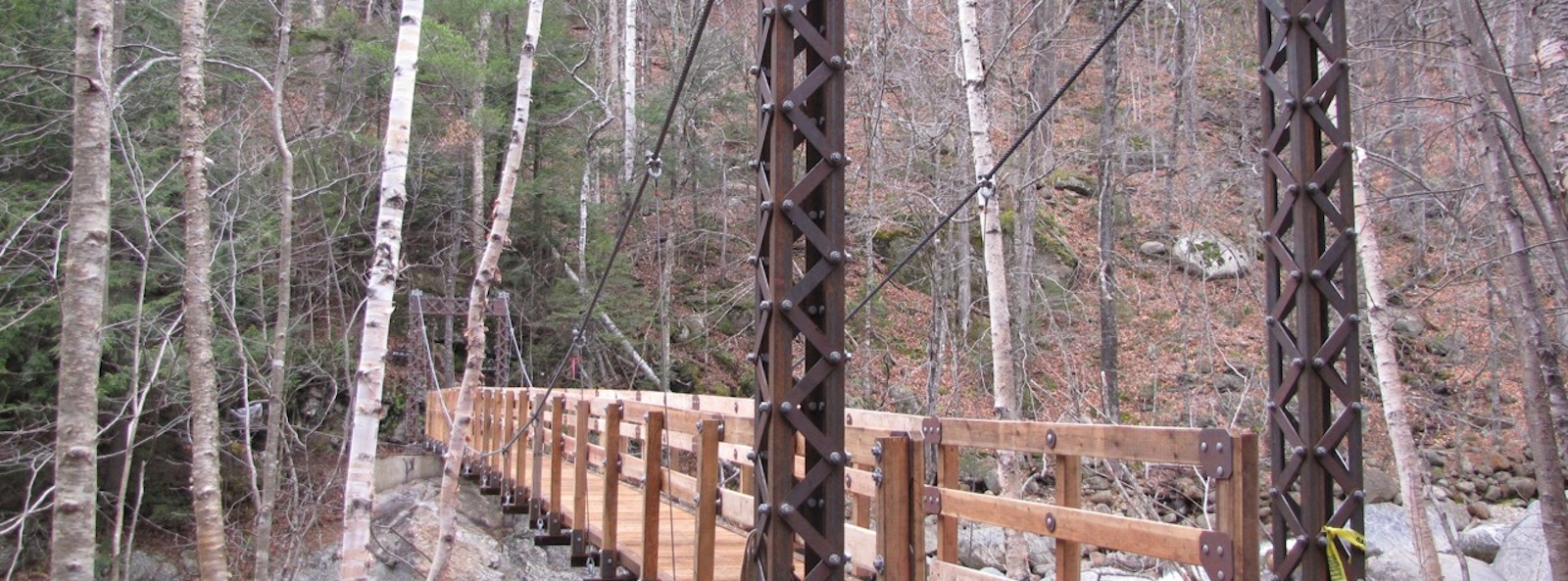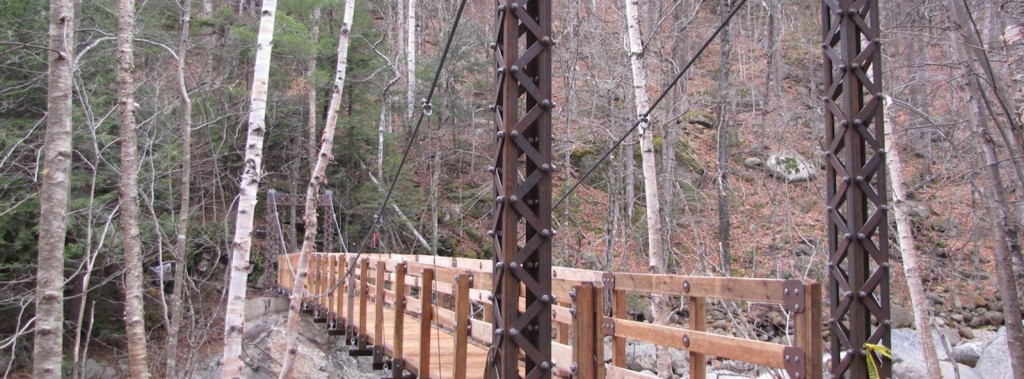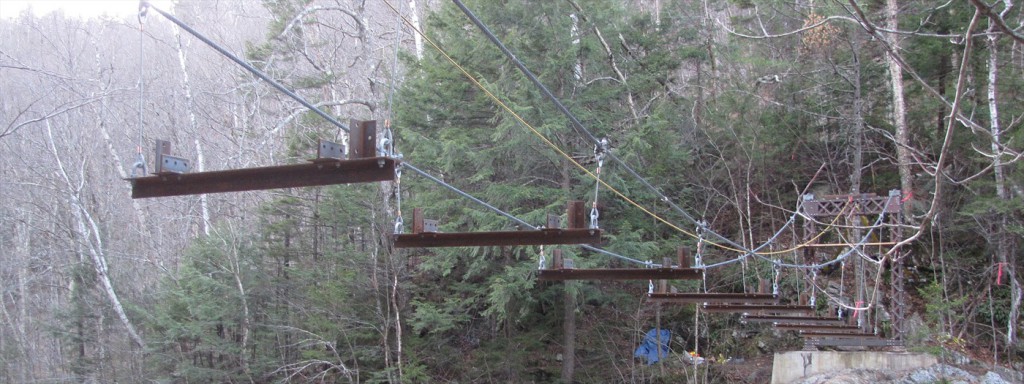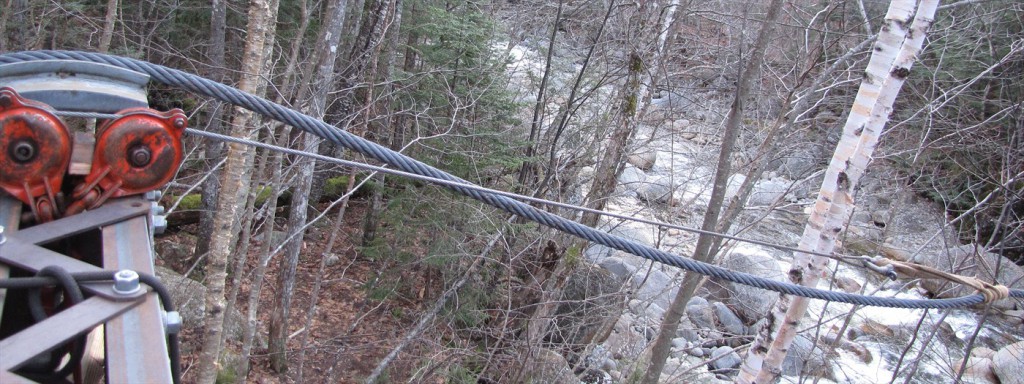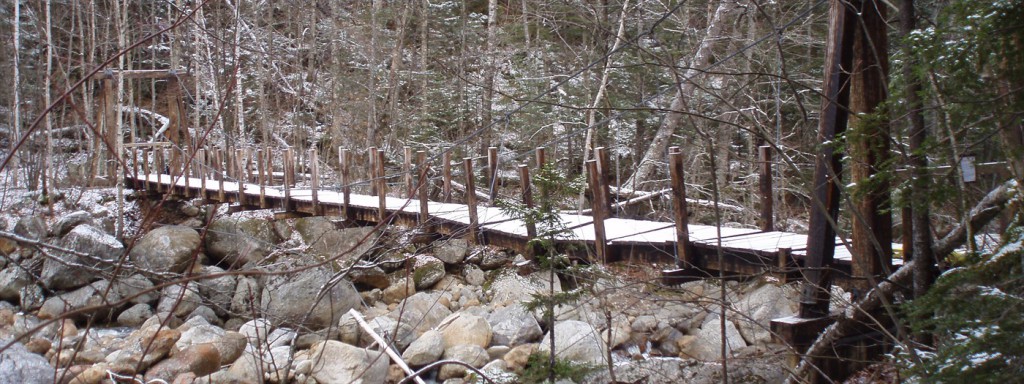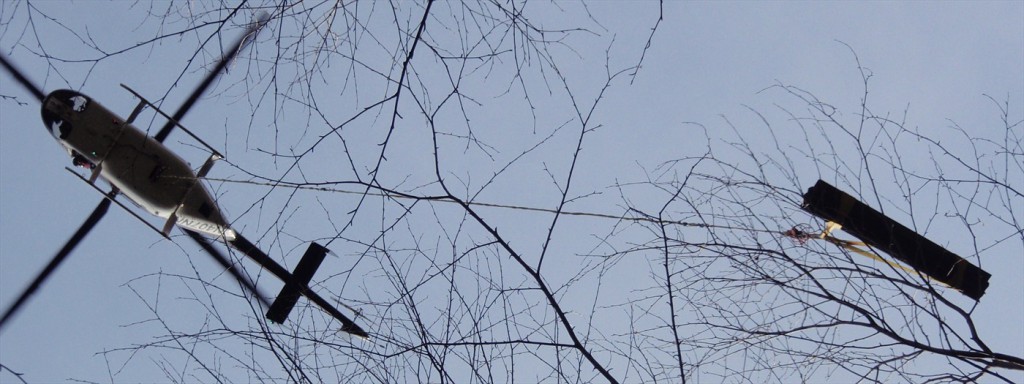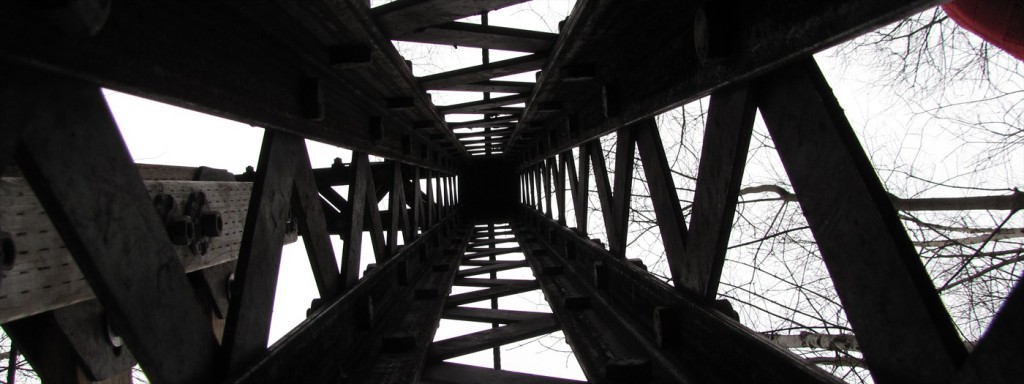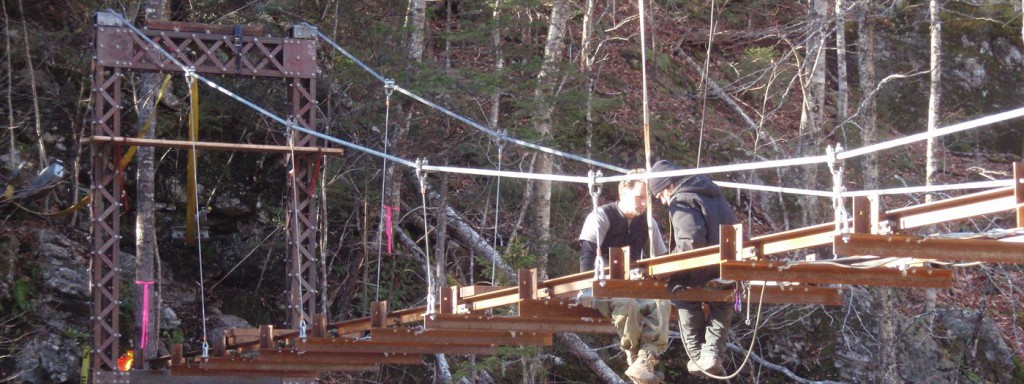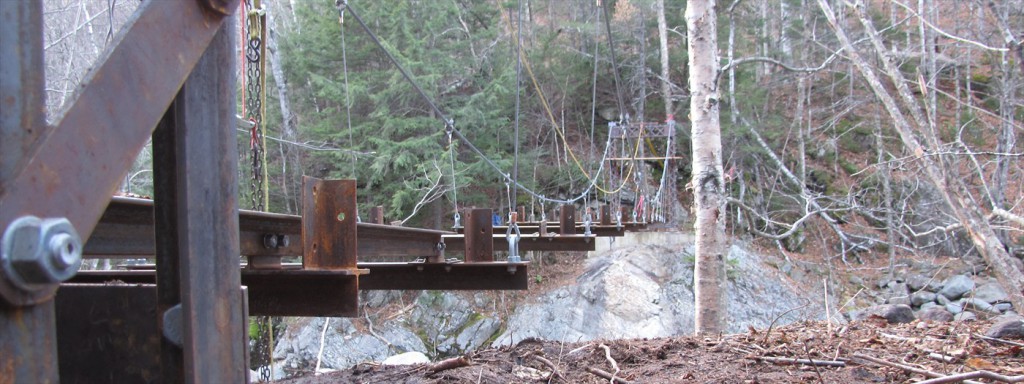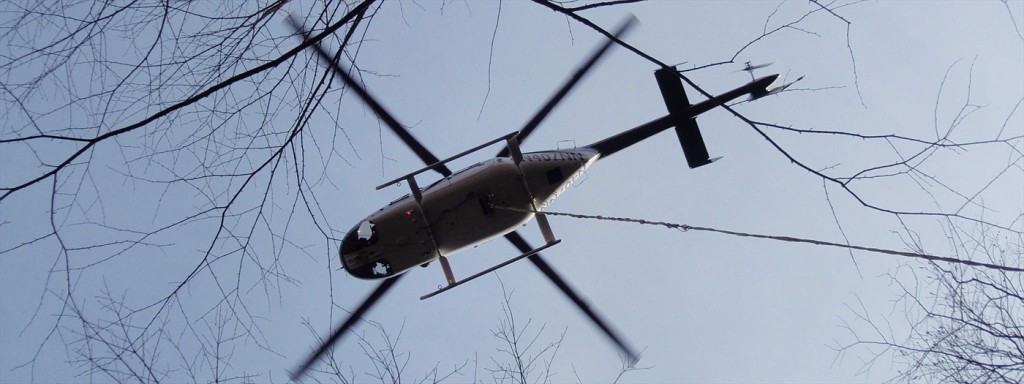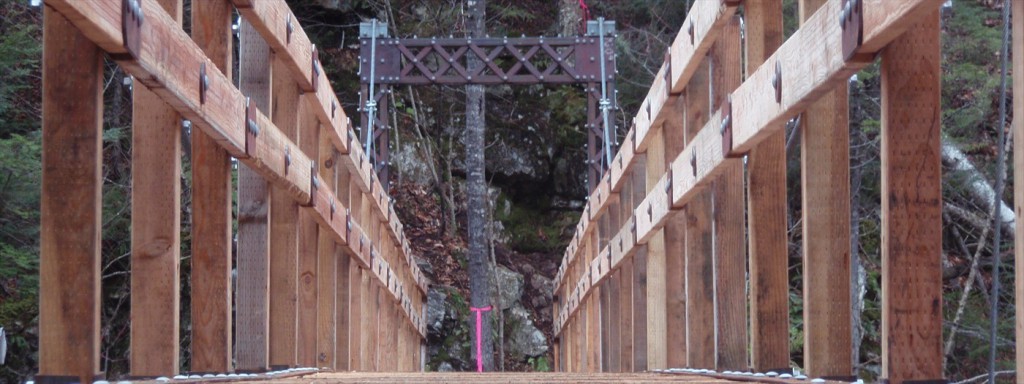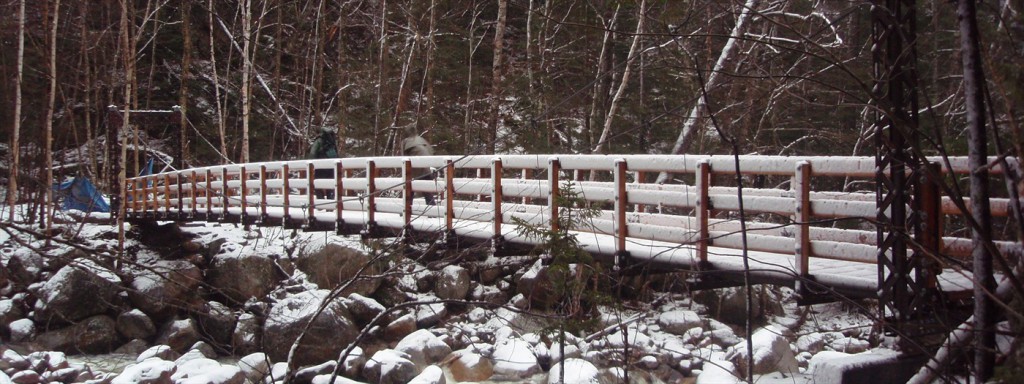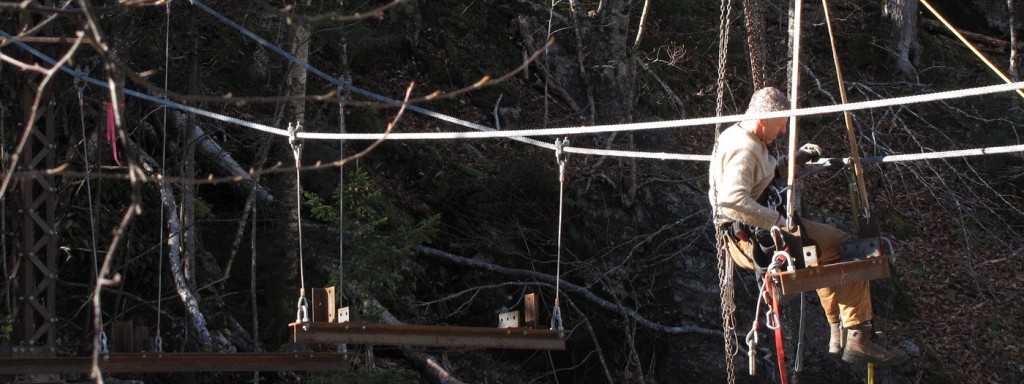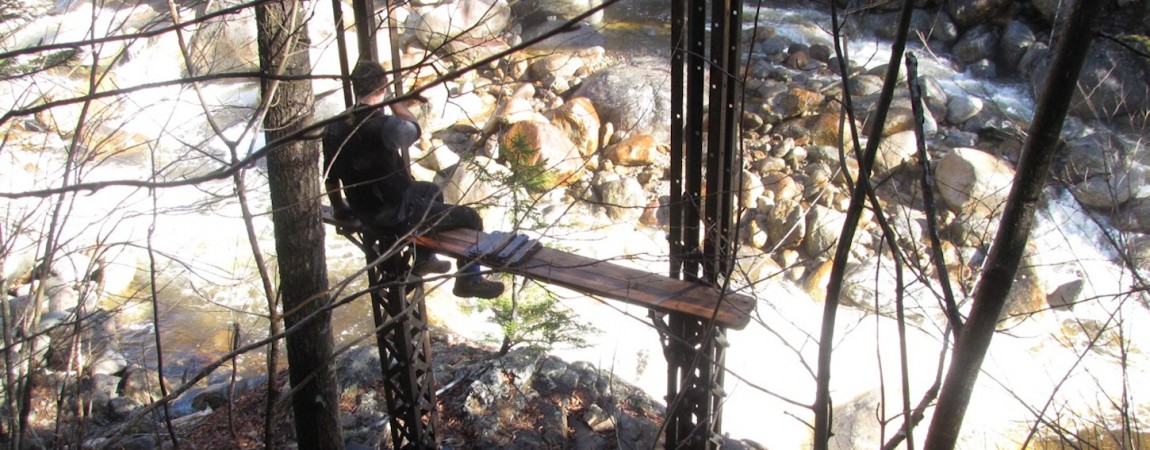- Bridge Specs: Tower Height = 11’: Span = 110’: Travel Width =5’: Deck = Timber: Mainline = (reused) 1 1/8” galvanized structural strand: Suspender Size = 3/8” wire rope
- Services Performed: Design/Engineering, Fabrication, Demo, Installation.
The White Mountain National Forest approached Sahale LLC in 2007 regarding replacement of a damaged suspension bridge one mile from the trailhead at Crawford Notch State Park. The existing bridge, a landmark on the local trail network, had been constructed with timber towers and superstructure in 1976, and was deeply compromised and at risk of failure.
The good news: the anchors, abutments, and mainline cables remained in fine condition. Coordinating with the White Mountain National Forest, Sahale LLC drew up plans to replace the timber bridge towers and superstructure with weathering steel, while reusing the mainlines, anchors and abutments. Further, Sahale simulated the appearance of the existing superstructure with new timber rails, posts, and decking elements. In addition, the structure was optimized for installation using only hand tools, due to its location within a Wilderness boundary.
Fabrication was directed by Steve Howell, completed in Fall 2008, and the bridge was delivered in package form in October 2008. The bridge was staged to a yard in Bartlett, NH with installation scheduled for late 2009. A Sahale field crew led by Ken Gilman arrived at the beginning of November, 2009 and began demolition of the existing structure, identification of helicopter staging locations, and preparation of new bridge material and tools for delivery by helicopter. Demolition was completed by November 10, with debris from the demolished bridge staged for removal in lifts; helicopter operations were completed in a single day, November 11.
Working from a wonderful base at a Forest Service work station in Bartlett, the Sahale crew made their way on foot each day from the trailhead to the bridge location one mile upriver. Despite the restrictions on tools and the peculiarities of the ‘commute’, installation was rapid: towers were complete and mainlines reset by November 16, and the bridge was substantially complete and ready for inspection before Thanksgiving. Gilman, Martin Walz, Aaron Nelson, and Austin Thompson completed humping out all tools and gear by foot by November 30.
The rebuilding of the Dry River Suspension Bridge was a success, and it was just in time. In September 2011, Hurricane Irene plowed through the region, dumping 14″ of precipitation in 24 hours and damaging and destroying bridges throughout the Forest. Debris carried down the flooding Dry River would have swept away the former structure, but the steel superstructure on the rebuilt Dry River Suspension Bridge weathered the storm and survived the impact of the debris.
Our gratitude to J. Sylvester, Engineering Technician on the White Mountain National Forest, for spearheading this project, and to the friends we made at the Northern Research Station.
